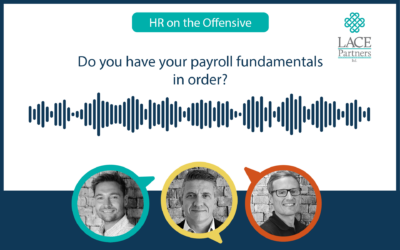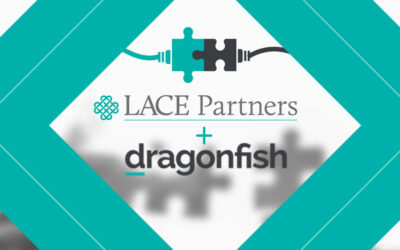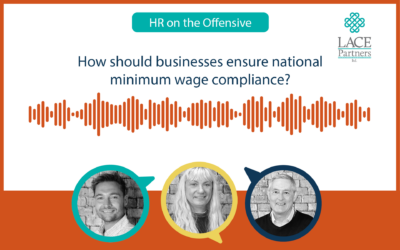Increasingly businesses are recognising that their policies and culture need to promote the representation and participation of different employees; but how can they do this effectively? We speak to diversity, equity and inclusion expert and speaker Guilherme Klein from PMI to get his insight on this essential topic– read on for the summary or listen to the podcast here.
Did your perception of DE&I initiatives change when you went from marketing to HR?
In terms of HR, DE&I should be something you interact with day to day, and something regularly talked about. Whether this happens or not is another matter. On the flipside, most businesses today understand that if they want to be closer to the consumer, they must be diverse and inclusive. The perspectives of each are different but they want a similar outcome; whether it is to deliver a product or create a culture that is safe and allows employees to be comfortable and bring their true selves to work.
Do you have an example of the branding team and the HR and DE&I team working together?
The way I identify whether a company or brand has inclusion and diversity embedded throughout their organisation is by looking at the end product. For example, Ben and Jerry’s do a great job here. You see representation across a variety of levels in the organisation, a variety of voices within the organisation and their products and branding are super inclusive. On the flipside you see other organisations simply running a campaign for Pride month and having it fall through because it’s not genuine.
What is rainbow washing?
Rainbow washing or ‘pink money’ is the incidence of companies trying to use a cause or movement to make a profit. This can be seen as a ‘shallow profit’ because they’re not reinvesting that money and helping the community to grow. Instead, they see it as an easy way to position themselves to be part of something “trendy” and relevant. But they’re not taking any action to change the environment, engaging with queer-owned businesses or interacting with their chains to ensure that they have representation in their workforce and leadership teams.
The danger is the company’s reputation and how people perceive the brand. Today it’s no longer about storytelling it’s about story-doing. Simply telling a story about what you could do won’t work, you must do something and let the story emerge from that. If you don’t do something with purpose, it’s going to fall short and that’s going to impact your business down the line. It could result in a loss of profits or people having a negative perception of your brand.
How widespread is this issue?
We often see companies trying to communicate to or with, for example, the LGBTQ+ community through their products rather than through their people. Most companies stamp a pride flag on their logos and claim they’re allies.
However, the companies that communicate well with these communities engage with their people and listen to their employees need to move the needle. It speaks volumes when a company uses its name, workforce and brand to fight for a cause. It’s obvious when someone is supporting a movement because it’s the #loveislove trend versus a person who is making a difference. The support doesn’t always have to be on the political scale, you can show support on a local level by providing jobs and support.
How can HR and DE&I teams work together effectively?
Numerous organisations have made diversity equity and inclusion a function separate from HR although often thy are still sitting under the HR umbrella. In any case, it’s important for the HR teams to be working closely with the DE&I teams because by doing so you can get a spread-out network.
HR is an integral part of the business and as such the HR teams can boost the messages from the DE&I teams to across the whole business. HR can help embed the practices, behaviours and culture the company wants to promote in every step of the process. For example, this can be achieved by the HR team creating training for unconscious bias or creating supporting policies to be distributed across the entire business. Are the voices of the represented groups being heard on the topics that pertain to them? These are some of the ways HR can support DE&I teams.
What is the importance of active listening?
When you listen to an individual without thinking of a response or a solution to their problem, that is active listening. The aim of active listening is to try to understand their perspective, what they went through and what caused their behaviour. Active listening can allow you to exercise empathy, understand things from another person’s perspective and build trust.
Understanding someone on a deeper level makes it easier for you to break your own bias and recognise some of the actions you are doing that is contributing to someone else’s pain. The built-up trust can lead to the other person sharing their true feelings about what it is that’s really bothering them. It’s crucial for DE&I teams to practices active listening. If they don’t listen and aren’t able to build that trust, they are not going to be able to get to the root cause of the behaviours that is happening around the organisation.
What does the term “microaggression” refer to?
Microaggression is a very common term used in the DE&I space. Microaggressions refer to things people will say about another person to try to diminish them or exclude them from the conversation – and this can happen anywhere. An example would be someone saying that women don’t belong in the workplace they belong in the kitchen. People may laugh at this comment and then move on. However, this can impact a listener in a way where they feel like that can’t join in on the conversation.
That was an obvious example but microaggressions tend to be more subtle and often occur without the subject present. This makes microaggressions hard to tackle because people rarely call it out or report it to the appropriate teams. It’s important that when microaggressions happen we speak up even if it’s uncomfortable as the individual on the receiving end may not be able to.
What impact can a centralised DE&I team have on the wider organisation?
The culture of a business is created by its people. It’s not HR or the C-suite who will be make it. To be innovative, room needs to be made for people to speak in meetings, to make sure they have psychological safety and more. This can’t easily be done en mass but it can start by implementing a new policy, for example on parenting. If it includes all types of families and it’s clear that this change will be followed through with, it makes a big difference.
Alongside this, businesses need to make it clear that when something occurs that is not a part of the new culture that the business wants to create, they report it. If we don’t, we can’t educate the right people and identify the biggest problems to act on. You need to consider what milestones will show your people that you’re changing direction and work towards them.
Practical takeaways for your diversity, equity and inclusion strategy
It’s important to think of diversity, equity and inclusion in your company as a business case. The most important step is to talk to your people and understand what they need because that’s going to give you the direction and actions needed to move the needle. ERG’s are a perfect place for underrepresented groups to express their voices and many companies don’t use them effectively. In ERG’s alone there is more than enough insight for a full DE&I business case; to turn their voices into actions, processes and policy.
If you have questions on what you read or want to discuss how you can enhance your DE&I strategy, get in touch using form below:






